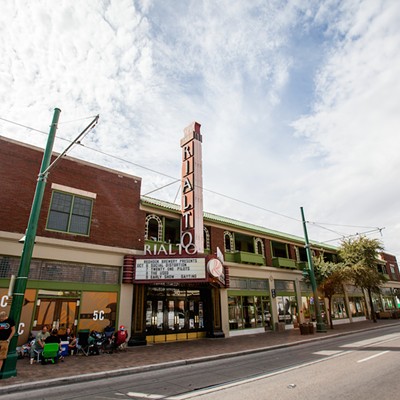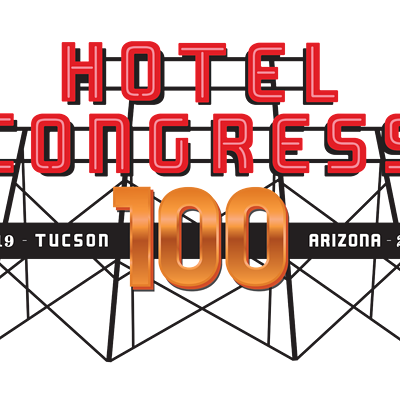While Tucson leaders ponder the wisdom of building a Sheraton convention center hotel, Phoenix opened one in October 2008. But its occupancy rates have fallen significantly short of expectations.
In 2005 the consulting firm HVS International prepared a market study for the proposed Phoenix hotel. It predicted in the first nine months of operation there would be 60-percent occupancy, increasing to 63 percent the following year.
Reality was quite different. For 2009, according to a City of Phoenix financial report, the hotel had a 49.4-percent occupancy rate.
Phoenix's finance director, Jeff Dewitt, says the underperforming hotel presents some financial challenges.
The city committed non-general fund taxes to cover any shortfall in operating proceeds to pay a portion of the hotel's construction bonds. Despite that, earlier this year, Standard and Poors changed the rating on these bonds from stable to negative.
Dewitt says hotel revenues will cover 2010 construction debt service and believes they'll be sufficient for 2011. After that, he admits, it's questionable.
Stating he didn't work on the Phoenix market study and can't comment on it, Thomas Hazinski of HVS does say, "There's one obvious fact—(the report) was completed before the financial crisis."
Hazinski did help prepare a recent HVS analysis for the proposed $202 million Tucson convention center hotel. It anticipates an initial occupancy rate of 55 percent, rising to 67 percent within two years and then stabilizing at 69 percent.
These figures, Hazinski acknowledges, are based upon an economic recovery. "If that doesn't happen," he says, "in Tucson the projections won't be met."
Those projections are critical to local taxpayers because they might be on the line to pick up at least some of the construction costs of the hotel.
If the Tucson Sheraton doesn't perform as anticipated, the shortfall in revenue to pay for construction bonds might have to be paid by severely budget-challenged City Hall. That is not a prospect Councilwoman Regina Romero endorses.
To avert that scenario, on July 13 she sent City Manager Mike Letcher a memorandum. It was also published as a guest editorial in the Arizona Daily Star.
In her memo, Romero writes that she favors the hotel project but calls for lowering the city's risk by requiring greater financial participation from Sheraton and Garfield Traub, the firm managing construction. As of last week, Romero hadn't received an official response to her suggestions.
Regardless, Romero believes Letcher has been clear in his public statements about the proposal.
"He won't get the city into a situation," Romero suggests, "where the city's general fund is on the line.
"The hotel has to be able to support itself," Romero continues. Additional financial assistance "needs to be pledged from others before it gets to the general fund. If that doesn't happen, (the city manager) won't recommend it and I can't approve something that won't be a success."
Alan Willenbrock is skeptical of the Tucson hotel being as successful as the HVS study portrays. He recently stepped down from the Rio Nuevo Multipurpose Facilities District Board, the appointed body that, with the City Council, will decide the hotel's fate.
Willenbrock calls the HVS study "very sloppy" and believes the information provided "is not consistent with the evidence."
Pointing out that the HVS report shows an average length of stay for Tucson convention goers twice as long as that in Phoenix and several other cities, Willenbrock contends the explanations given for this discrepancy haven't been satisfactory.
"I'm not for or against the hotel," Willenbrock continues, "but I am against misleading taxpayers toward expectations not likely to be realized. I can create a strong case why the hotel is likely to be less successful than the consultants say."
If that happens, Willenbrock thinks paying for the hotel's construction bonds "will likely require significant (city) general fund subsidies."
Heywood Sanders, a professor at the University of Texas-San Antonio and a frequent critic of the convention industry, spoke to the City Council in July. He believes the message Tucson leaders should take from the less-than-anticipated Phoenix hotel occupancy rate is simple.
"Projections," Sanders says of convention center hotel studies, "often aren't realized."
Another assumption made in the Phoenix HVS analysis, Sanders stresses, is that the recent enormous expansion of that city's convention facilities would bring many more customers to downtown hotels. That, he says, hasn't happened.
Addressing a major contention of Tucson hotel proponents—that the facility is needed to spur downtown revitalization—Sanders observes, "It's much the same argument made in every city in the country. ... The problem is, the more places that do it, the more competition there is. The result is what happened in Phoenix. You don't see much increase in business."
David Pittman works for the Arizona Builders Alliance, an organization representing about 150 construction companies. He cites job creation and economic stimulus as two reasons he supports building the hotel.
Since the height of the building boom in 2006, Pittman points out, Pima County has lost almost 14,000 construction jobs, or about one-half its former total.
"There are a lot of good things about the hotel project," Pittman emphasizes. "I think the city needs the downtown hotel. We have a lot of things going for us and we want to bring people downtown."
Then Pittman returns to his original theme: "It will put a lot of people back to work who need jobs," he says of the hotel proposal. "Let's look on the bright side."












